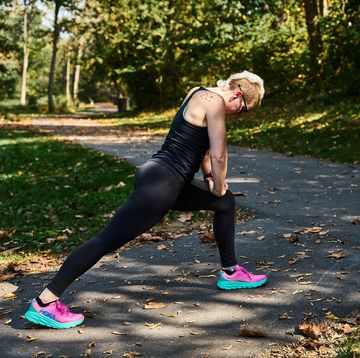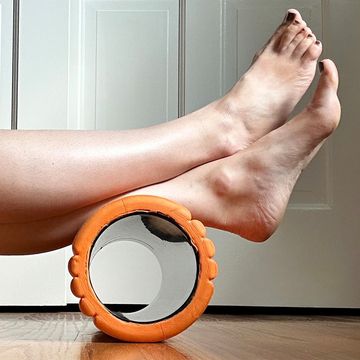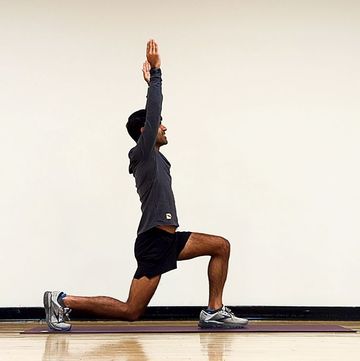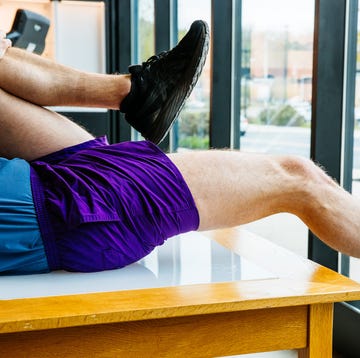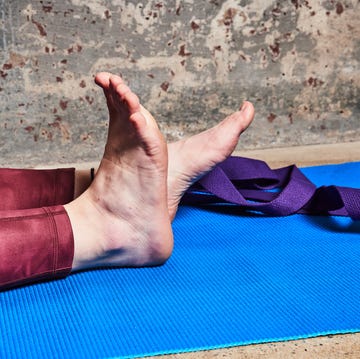Here’s How to Correct Your Posture So You Can Run Better
You need these four moves to help you run taller and stronger—especially if you work from the couch.
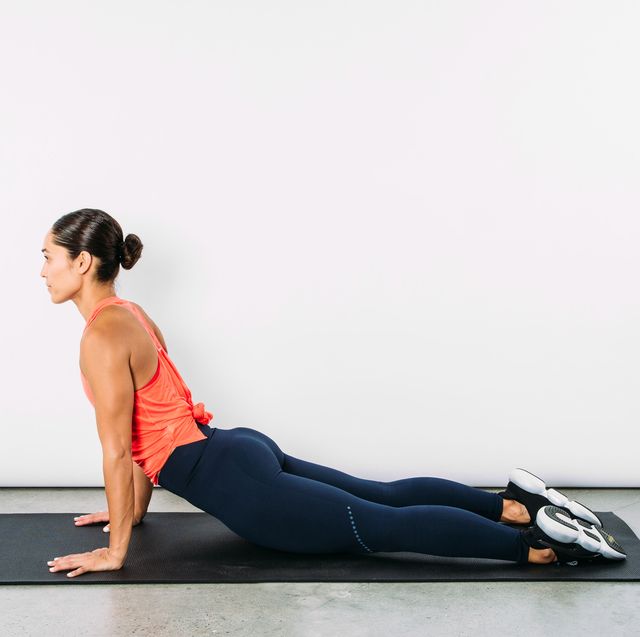
If you’ve been working from home since the pandemic began, you might still turn to the couch or bed as your work space. But, as it turns out, hunching over your computer all day in places that aren’t exactly ergonomic could be wreaking havoc on your runs. Even if you do work at a traditional desk, chances are your shoulders still round forward and/or lift up by the ears, you tuck your pelvis way underneath you, or you sit with your legs in less than ideal positions.
So to help you understand how your body alignment during the day can affect your runs in the morning or night, we tapped experts to find out. They also explain how to correct your posture, and what you can do throughout the day to alleviate aches when you hit the road.
What is bad posture?
Bad posture is not necessarily “bad,” Jess Mena D.P.T., C.S.C.S., tells Runner’s World, but our bodies need a variety of movements and positions. Mena says slouching (rounded shoulders, head tilted forward, back flexed) can cause problems when you sit like that for eight hours a day, 40 hours a week, for months to years on end. This can actually lead to structural changes of the spine and muscles, which causes people to notice or complain of pain.
Jaclyn Fulop, M.P.T., a board licensed physical therapist and owner of Exchange Physical Therapy Group, says it’s not just sitting at a desk all day that causes bad posture. Excessive internal rotation of the shoulders, a position we tend to find ourselves in throughout the day, can also happen when we’re sleeping, driving, eating, and texting—basically any activity that puts you in position where your head is forward and your shoulders are rounded. Reinforcing this posture with faulty ergonomic leads to poor health and athletic performance.
Why should runners pay attention to correcting their posture?
Runners who sit all day without intermittently getting up (once an hour is recommended) may start to develop stiffness in the hamstrings, hip flexors, hip joints, thoracic (or upper) spine, and pectorals (chest muscles). This can make your dynamic movements—such as lunges, overhead presses, push-ups, and rows—less effective.
“Specifically for running, sitting or standing in compromised positions over many hours and months on end can affect the lengthening of the spine and the mobility of the hip. This can affect the push-off phase of your gait, make arm swing inefficient, and cause instability of the trunk due to malignant [positioning] of the pelvis and rib cage, which will affect diaphragm function,” Mena says. Translation: You become a lot less efficient on the run, and it can even mess with your breathing.
Another issue that can come from sitting all day is dormant butt syndrome, which is weakness in the glutes and tightness in the hip flexors, Fulop explains. IT bands are also shortened with any type of sitting, so stretching these large muscle groups is important. Sitting in a crisscross position for too long can lead to an imbalance in the pelvis, increased pressure on the spine, and pain. You will want to stretch the posterior chain if you find yourself often sitting in this position, particularly the hamstrings and gastrocs (calf muscles).
How will posture-related pain affect your workouts?
Extended periods of “bad” posture that cause structural change can cause stiffness of the hip. This increased compression affects the lumbar spine (low back), excessive thoracic flexion (rounded upper spine), and stiffness, which can promote excessive cervical spine extension (head forward) and scapular abduction (when shoulder blades move away from spine). What does all this mean? Well, it can cause neck pain, which can lead to headaches. It can also cause excessive anterior gliding of the shoulder—also known as instability—leading to shoulder pain, especially with overhead (pushing/pulling/swinging) movements.
Stiffness and excessive flexion or extension of the spine will affect the ability of the abdominal muscles to properly stabilize and lengthen the spine and all of these things will affective ability to train and workout efficiently, Mena says. Overall, the risk of injury increases.
“Poor posture increases tension in the muscles, which can cause injury and even joint damage,” says Fulop. “Beyond affecting the spine, poor posture can also impair your lung function and lead to poor circulation which will have adverse effects on your workouts.”
How can you make your work set-up posture friendly?
If you are working from home, invest in a good ergonomic setup, Mena says. She suggests making sure that your chair has armrests that properly support your arms and reduce the load on your neck, that the monitor is at eye level, and if you have a laptop, investing in an extra keyboard will limit the time you spend looking down.
If possible, your computer screen should be about 20 inches in front of you (an arm’s length). Your elbows should be resting comfortably at 90 degrees and the wrists should be straight. The hips and knees should be positioned at 90 degrees with your thighs parallel to the floor and feet flat on the floor. Be sure to lean all the way back in your chair, with your backrest positioned comfortably on your low back to allow the upper body to be properly supported, Fulop says.
In general, working from bed or a couch is not ideal, Fulop says. Sitting on the couch displaces your weight and puts pressure on the back and hips, and using a laptop on the couch causes the body to slouch forward. But since it may be the only option for some of us right now, it’s important to keep your back straight and to prevent your shoulders from rolling forward. If the couch is deep, then use pillows to support your spine. Keep your feet flat on the floor with the hips and knees positioned at 90 degrees.
How can you correct your posture?
“I always tell my patients that they should adjust their position every 20 minutes. A trigger point or knot, a taut band in the muscle that becomes tender to touch, can take 20 minutes to form if the body stays in a static position. So get up and stretch or take a walk around the office, or your house,” Fulop says.
And, be sure to get up every 45 to 60 minutes and do some chest opening exercises or hip extension stretching exercises to take your body out of the “bad” position you might’ve slumped into.
“Remember that a variety of movement and postures is key,” Mena says.
Below are some stretches Fulop suggests doing two to three times throughout the day to get your body moving and correct your posture.

Watch Next


How to Treat Sore Hamstrings After Running

5 Dynamic Stretches to Practice Before Every Run

How to Improve Your Running Recovery Plan
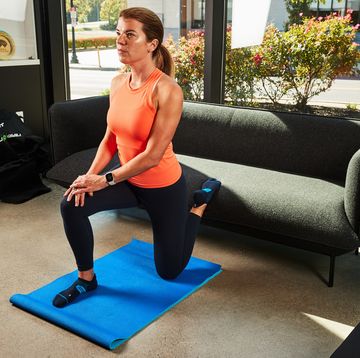
What Is Active Stretching?




